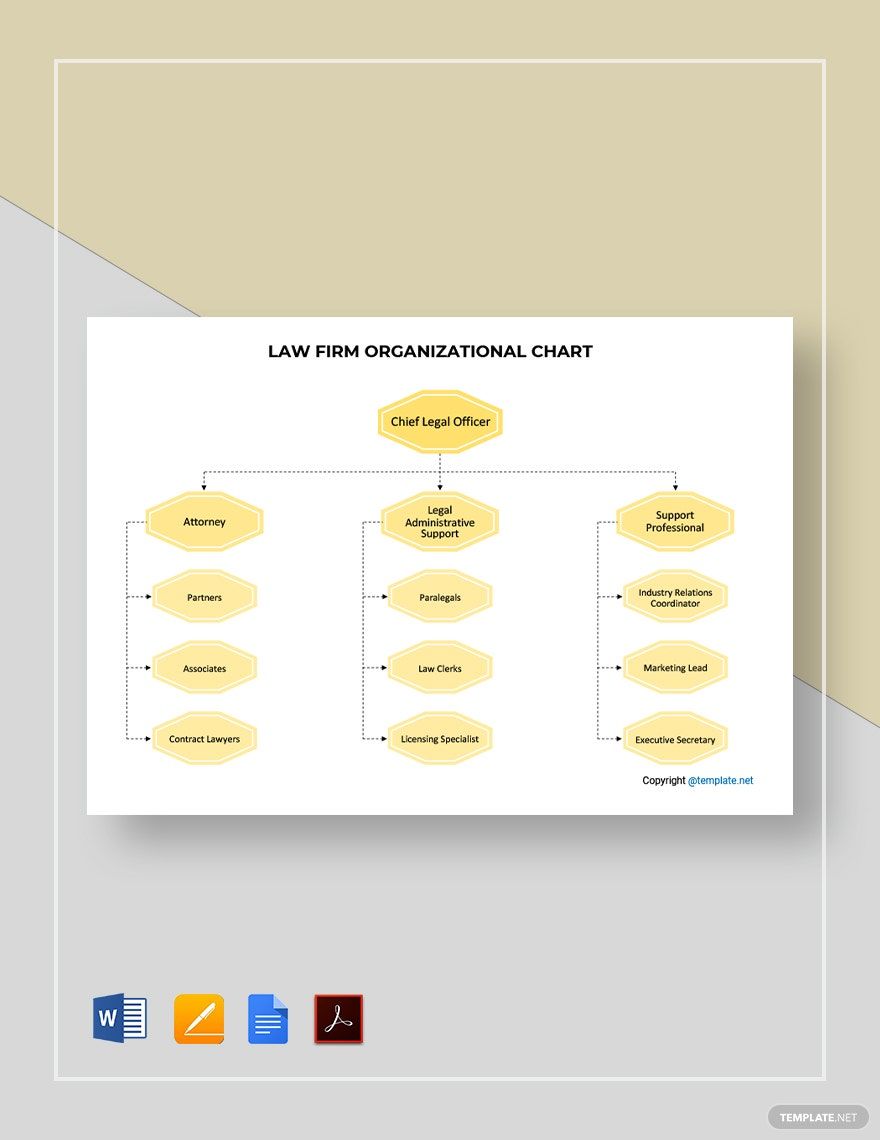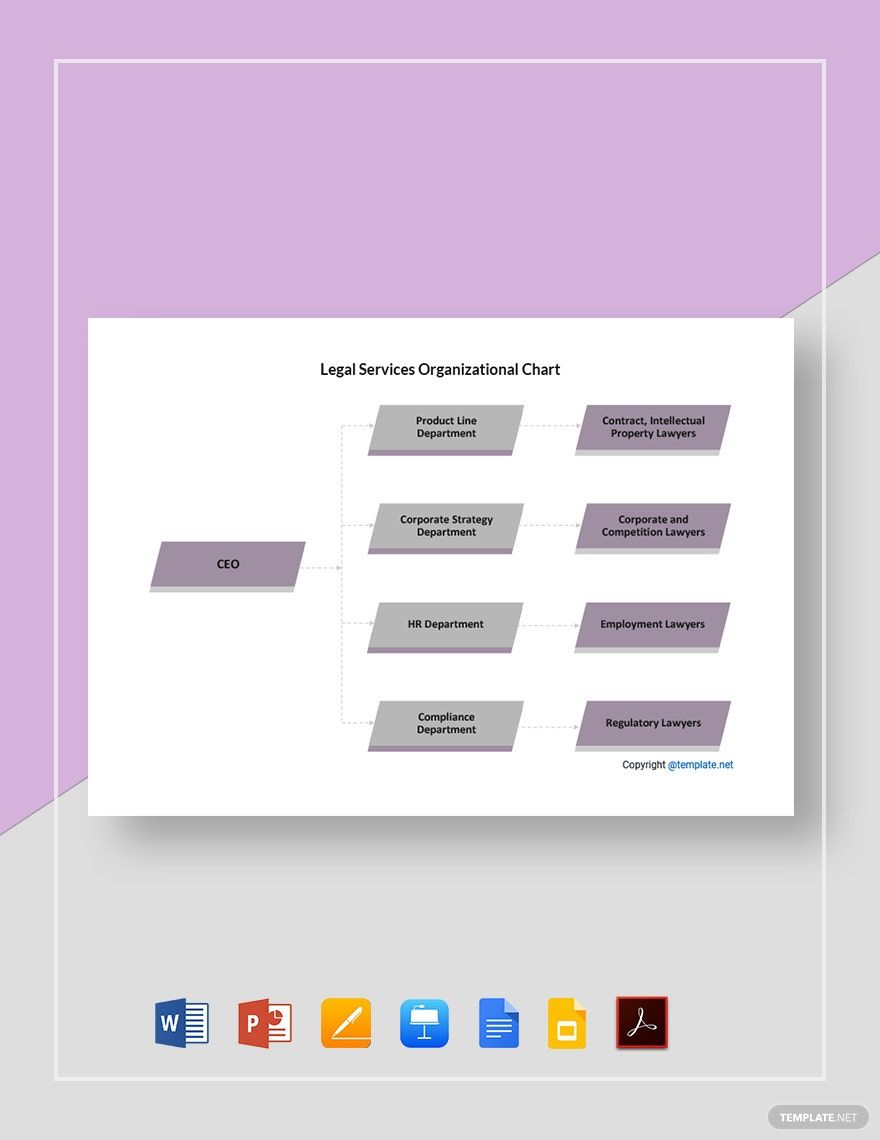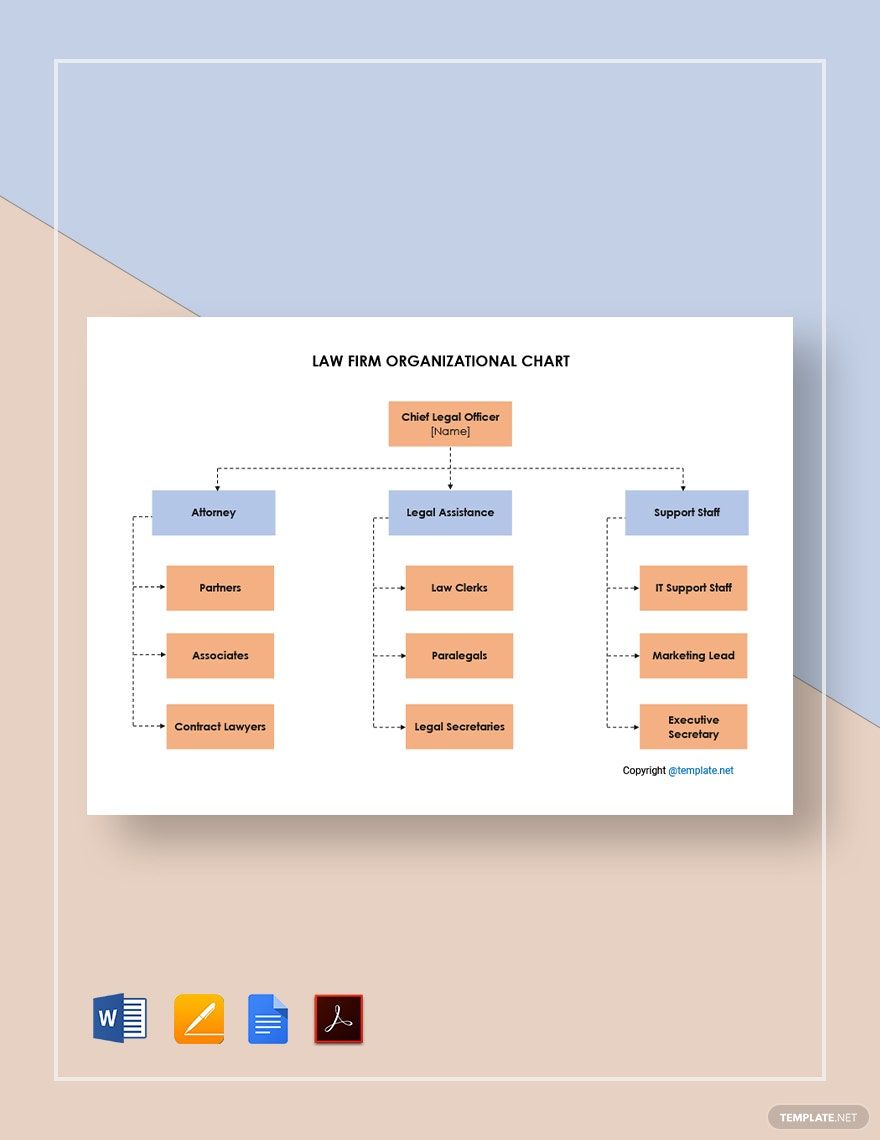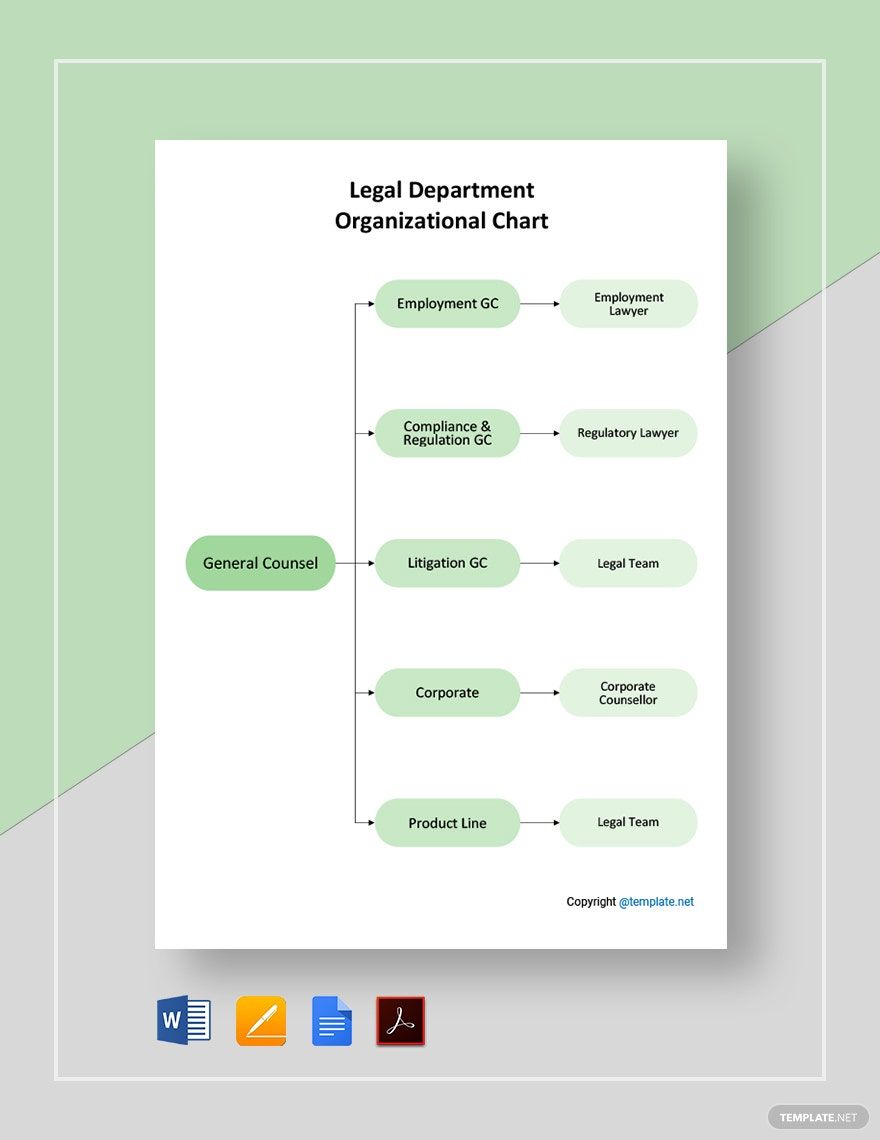Law firms operate as businesses. They too find the need to create organizational hierarchies and draft them in a tangible way in the form of organizational charts. From name partners that serve as the top executive to interns and paralegals who help with research and draftings, a well-organized firm becomes more efficient in its work. With this, our website will gladly help you create your Law Firm Organizational Chart to show your employees, at a glance, how your firm works. Simply download the editable template in Apple Pages format and fill in the necessary information as needed. Sign up to gain access to our documents now.
Law Firm Organizational Chart Template in Apple Pages, Imac
Working as a City Attorney Means You Should Have Your Own Comprehensive Organizational Chart. Template.net Can Help You Make One with Its Free Law Firm Organizational Chart Templates in Apple Pages. With Innovation and Professionalism, You Will Create Business Partnerships Easily. Download a Template Now and Edit It Using Your Mac Device.
How to Make a Law Firm Organizational Chart
Much like any other business, a law firm organizational chart should show the roles and functions of its employees. What makes it a bit more complicated, however, is how the law works: departments clearly defined, yet somehow interconnected. It can be confusing whom to report depending on the cases the associates are assigned to, which is why it is imperative that your firm makes your organizational hierarchy clear.
1. Clearly Define Departments
The law is subdivided into multiple areas, and unlike businesses where employees have a direct supervisor to report to, law firms work differently by assigning interns to different associates on a rotating basis, or at their discretion. To avoid confusion, make sure that all departments and subspecialty areas are clearly defined in the workplace.
2. Focus on Leadership and Accountability
Most law firms build their leadership through seniority, making it unclear who manages whom. However, there are firms that prefer management by committee, which seems like a good idea but could delay the decision-making process. A lack of leadership in the firm creates confusion for the staff, which is why a more vertical leadership structure creates a more streamlined firm.
3. Don’t Forget the Supporting Departments
While it is easy to think that law firms are filled with lawyers, associates, interns, and paralegals, don’t forget that there are other functions that need to be addressed, such as marketing, accounting and finance, IT, and even human resources.
4. Plot Your Organizational Chart Accordingly
Because of the complicated workings in a law firm, make sure that you have a specific structure to follow in your organizational chart. This could simply be by departments, by delivery of legal services, or by leadership and accountability. By choosing one structure, you can avoid a lot of confusion in plotting the organizational structure of your firm.
Frequently Asked Questions
What does a lawyer do?
Lawyers serve as advocates for the rights of their clients through offering legal advice, creating or reviewing contracts, or representing clients in court.
How are organizational charts important in law firms?
Like any other business or organization, the organizational structure in law firms remains important so that individuals know to whom they report to, or which ones are accountable for the firm. The organizational chart can help illustrate the complicated relationships within law firms, the chains of command to follow, and even the organization of departments.
Are law firms more vertical or horizontal in their structure?
Law firms that rely on a managing partner and senior management are more vertical in their structure. However, there are law firms whose main decision-makers are committees or the board of directors, making them more horizontal in nature.
Do law firms have managerial staffing?
There are two managerial areas addressed in the law firm: administrative, which included the financial, office systems, and so on, and governance, which included associates and client relations. Law firms use either one or a combination of these approaches to define the management style of the firm.
What are the main roles and responsibilities of a law firm?
Roles vary by department, but in more general terms, there are four main roles: the owner or CEO is the decision-maker in the firm; the attorneys, including the partners and associates, manage cases, litigate in court, and provide legal advice to clients based on their expertise; the legal assistants, such as the paralegals and legal secretaries, handle the paperwork and attorneys’ schedules; and the support staff is the ones who are not necessarily legally trained but are essential in carrying out daily tasks, such as the IT staff, receptionists, and administrative personnel.





